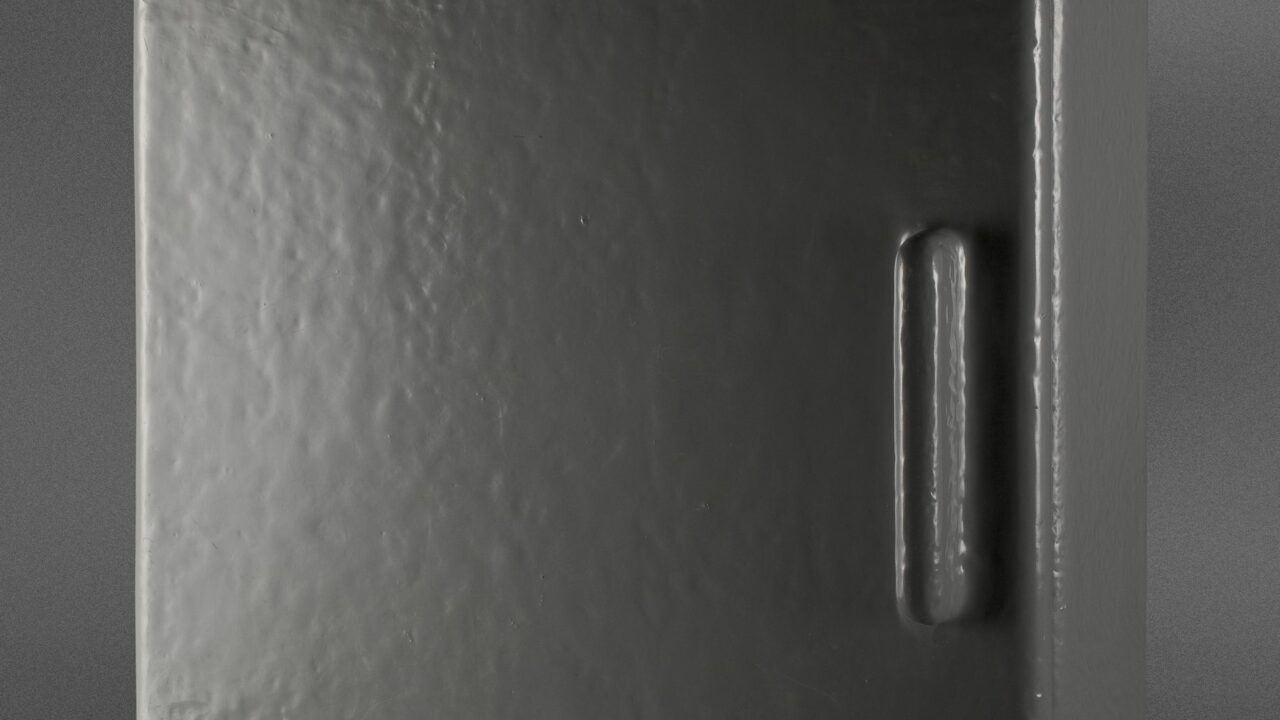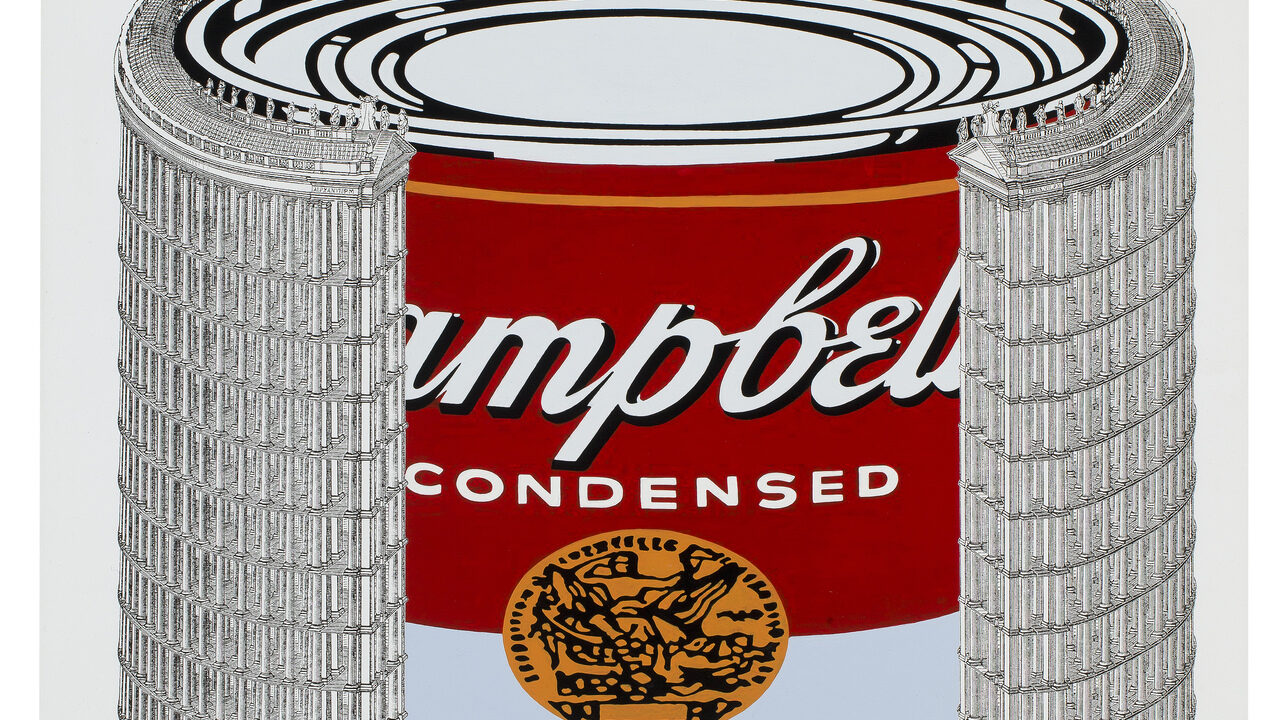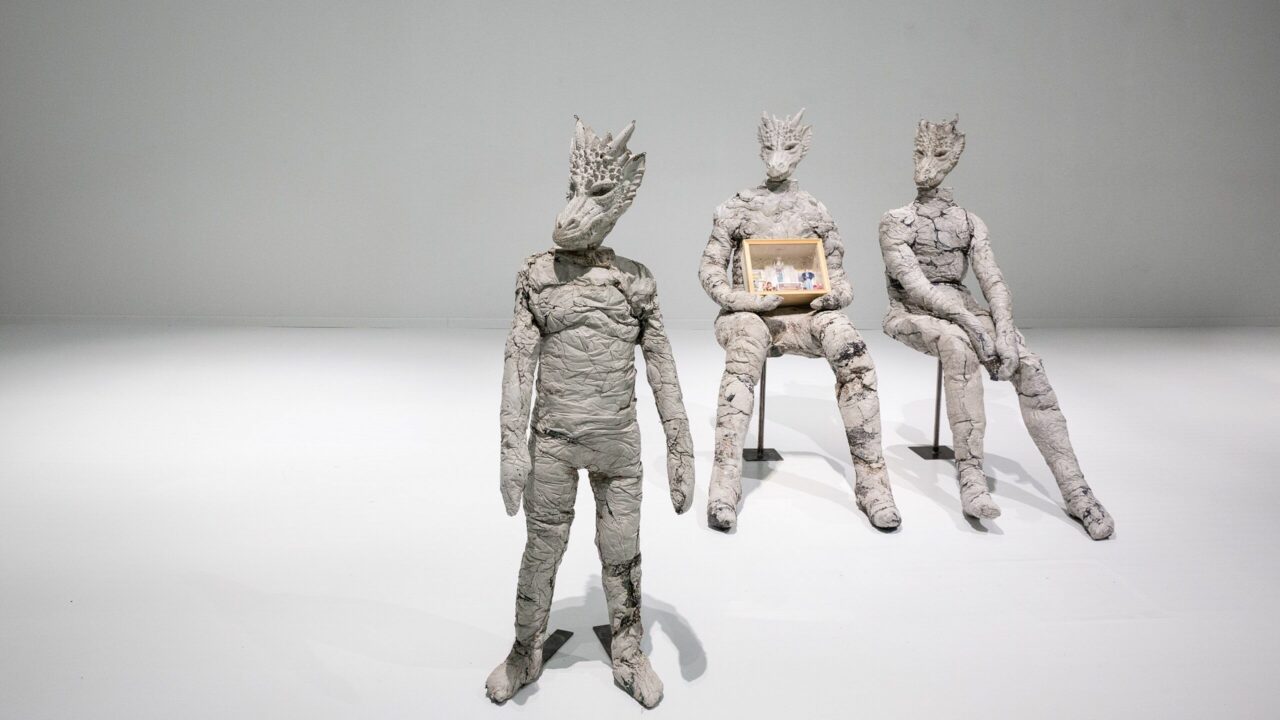7. Democratization of Art
The incardination of art in daily life, in major themes and social concerns of the present moment, such as the relationship between culture and the market, migratory movements or the family, is a feature that manifests with particular emphasis in the following selected works.
Artworks

Jaan ELKEN : Knock, Knock Knocking on Heaven’s Door, 2007 – On display in Visitors’ area, Brussels

Joep VAN LIESHOUT: Medicine cabinet, 1992 – On display in Parlamentarium, Brussels

Marko BLAŽO : Warhol 1, 2007 – On display in Visitors’ area, Brussels

Ruth BIANCO : Lines of Migration, 2020-2021 – On display in Parlamentarium, Brussels

Edith KARLSON : Family, 2019 – On display in Parlamentarium, Brussels





Currently, the political-social activation of art finds one of its most effective, controversial and recognizable global expressions in graffiti. Knock, Knock Knocking On Heaven’s Door (2007),by Jaan Elken, is the product of a vigorous exercise combining the technical resources of tachisme and graffiti. After a hyperrealist period, Elken let himself be enticed by this alternative street cultural phenomenon that he could often see when he lived in the ghetto area of Lasnamäe, when he had to pass through several storeys of interiors filled with urban symbols before reaching his studio.
Joep van Lieshout‘s Medicine cabinet (1992) is a metallic box of a neutral gray color and an ordinary appearance – a moulded reproduction of an industrial unit -; an example of a discreet and conceptual artistic object, where the artist’s authorship and personality are apparently absent. However, it is revealed to us as a contradictory piece, since when opening the door of the box, we discover the artist’s signature, scribbled large, on the bottom of the interior.
The artist founded Atelier Van Lieshout in 1995, a studio that follows a methodology toward undermining the myth of the artistic genius. In order to produce useful and imaginative art, endowed with a certain sense of humour and at the service of society, Van Lieshout has established a multidisciplinary practice that produces works on the borders between art, design, and architecture, investigating the thin line between manufacturing art and mass-producing functional objects.
Food production and consumption, transformed by the related industry and marketing into standardised products and advertising icons, is a central motif in Marko Blažo’s Homage to Andy Warhol, explicitly referencing the American artist’s 1962 series of 32 Campbell soup cans, considered today to be a seminal pop art landmark. In Warhol 1 (2007), Blažo has enveloped the soup tin in a Greco-Roman portico, an all-encompassing outer shell redolent of Roman antiquity and classical art, which suggests a sort of coupling between classical culture and mass culture.
Migratory movements, and their profound impact on families and societies, is one of the central topics in the career of the Maltese artist Ruth Bianco, with projects such as Connecting geographies or Tidal dialogues and transit zones, which develop a research-led art practice interrogating issues of territory and transboundary movements.
The polyptych Lines of migration (2020-2021) is unequivocally linked to the art contestataire or street art, given the expressive use of collage as well as the communicative effectiveness of the symbols and laconic written messages it puts into play. As the artist herself has pointed out, the artisanal and tactile quality of the piece plays a vital role in her concept, particularly since this work was produced during the Covid-19 pandemic, when the world had to resort to remote and socially distanced forms of contact. Family bonds are seen from an unusual angle in Edith Karlson’s Family (2019). Karlson often works with monstrous or animal characters, whether they come from extinct fauna or from medieval beast iconography that have later on been echoed in the world of fantastic literature and cinema. Karlson’s sculptures have sometimes been described as fables, especially when her animals or creatures are given human characteristics and behaviours in order to comment on contemporary society with a critical eye.